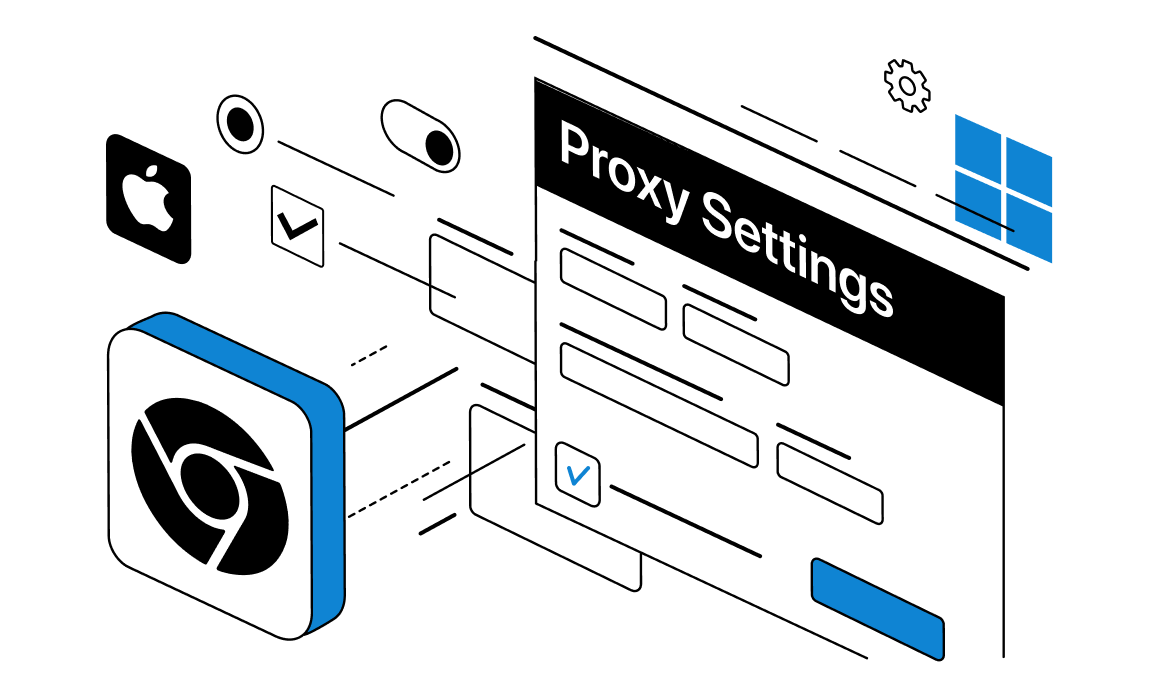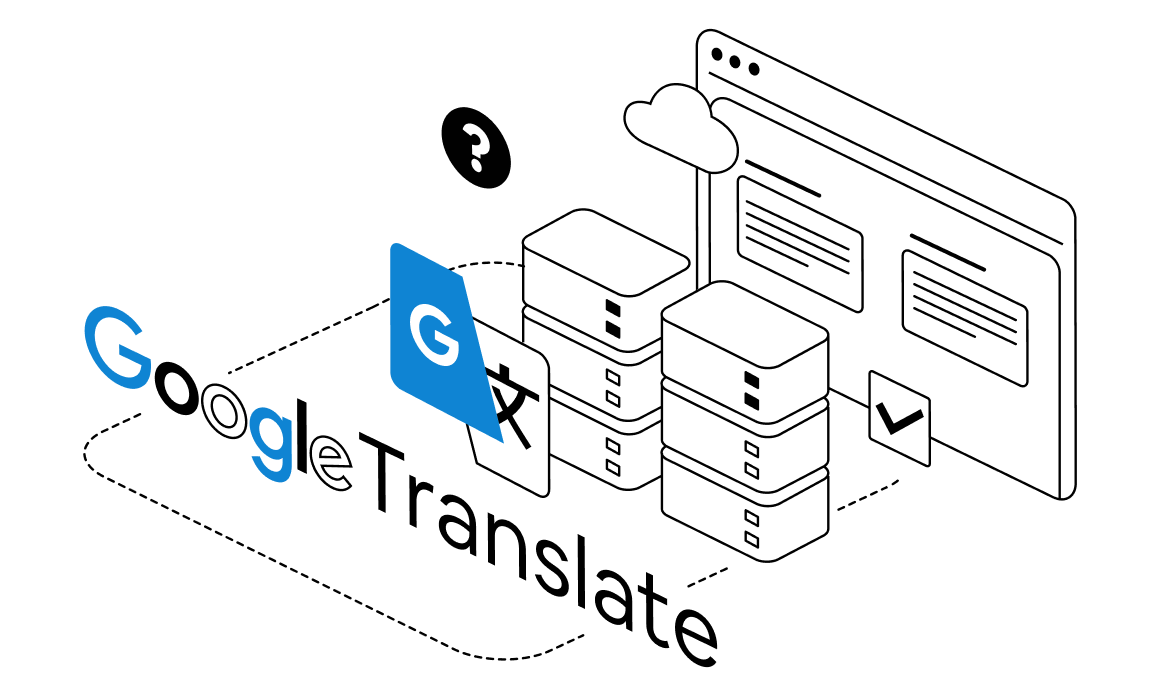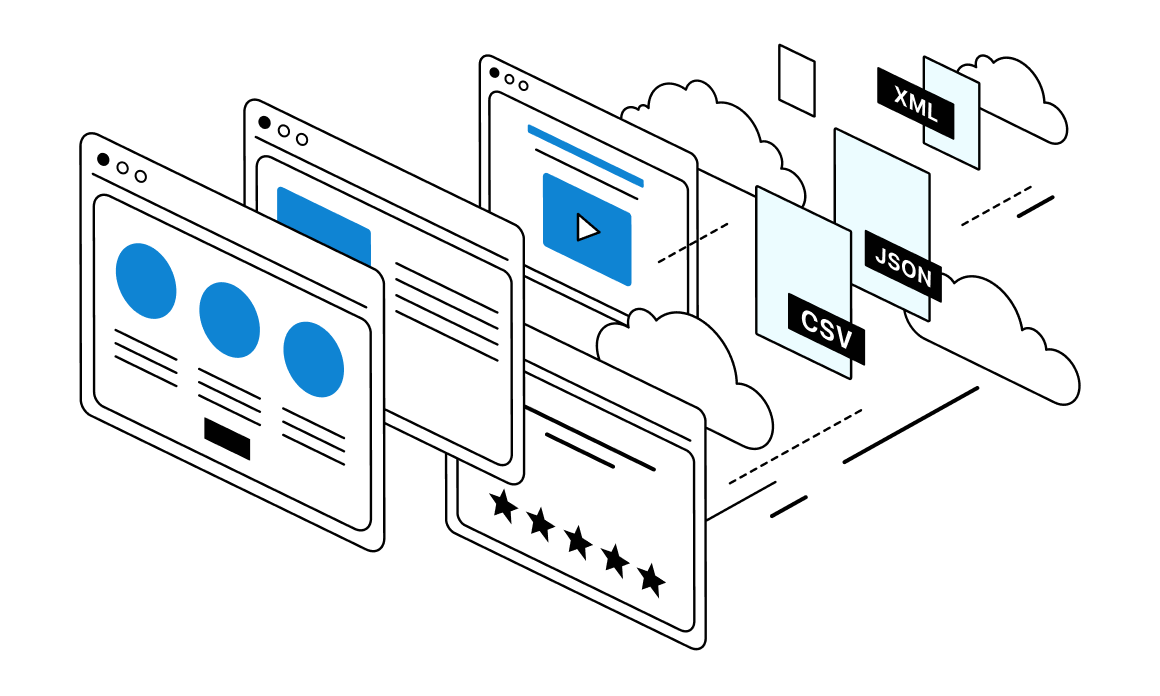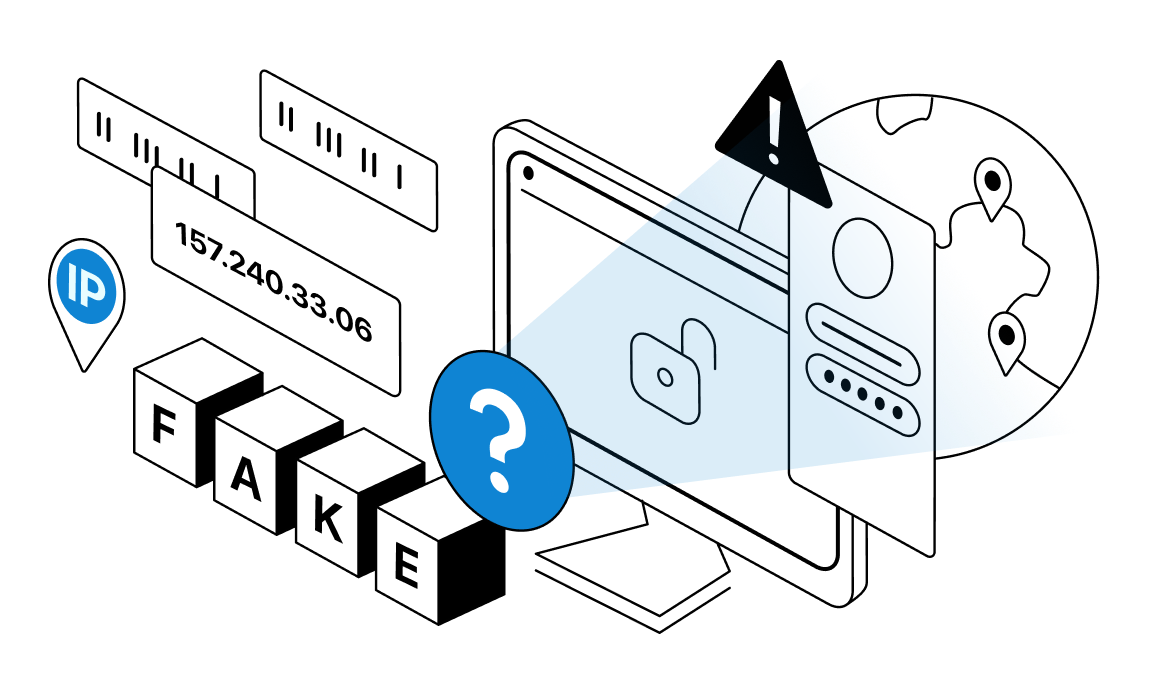Maintaining your privacy and anonymity while using the Internet is a tough challenge. Hackers constantly develop new methods and software for spreading malware on the web. One of the ways of dealing with this problem can lay in utilizing proxies for your daily tasks. In this article we will dive deeper into the topic of how to setup a proxy server on Google Chrome on Windows and Mac OS.
Using Proxy in Chrome
For starters, to understand how to use Google Chrome change proxy settings, we need to figure out all the basics. In most cases, proxies can serve as the tunnel for your requests. A server that handles proxy can be described as a system that retranslates your web requests and hides your IP. In the end, all the traffic sent by you will become protected and hard link with your system.
With residential proxy or other proxy based setup, your traffic will be sent to the server and after this to the page you searched for. To websites, it will look like a typical request from any server. In other words, with a proxy setup, it is easy to replace your IP and stay secure while browsing.
At the same time, a proxy can serve as an advanced firewall API that can help prevent any harmful activity directed at your system. Proxies can also serve as the tool for avoiding regional blocks that sites can establish. You can try to evade different region locks by utilizing proxy servers in several different countries or cities. For example, you can use a static residential proxy to bypass any regional locks of that kind.
The first thing you should prepare before managing Google Chrome proxy settings on your own, is information about your server. Proxy providers usually give all the credentials for the server that you need. There are a lot of providers and options to select from in the market. Some sites can even promise you free or extremely cheap proxies. In some cases you can even use the Google services like Google Translate as the proxy.
At first sight this such an offer might look profitable, but in the end, most of the free options aimed at benefiting from gathering your personal data. So, it is likely that you will pay for these services with your private data.
This is why you should take a good look at proxies you are choosing. This process should be taken with care, because you will trust a service with a lot of information about you. In this regard, you can try a datacenter proxy setup. This way you can be sure that any of your data is treated properly and with care.
When you find the desired option and copy the credentials for access, you can begin setting up your Google Chrome proxy server.
The first step of the setup will look the same in all systems that can run Google Chrome.
- Open Chrome browser settings and find a search bar.
- Type “proxy” in the search bar and press enter. Then scroll down to the proxy settings of the browser.
- You should see the page with a section that says “Open your computer’s proxy settings option”. Click on it and you will end up on the page that is needed for further steps.
All the next steps will be slightly different from system to system. You can jump to the paragraph with your operating system from here.
How to Use a Proxy Server in Google Chrome on Windows
On Windows based OS you can pick one of the two options to end your setup of the proxy server Google Chrome. First, try to find the automatic setup option. This method will work only if your network at home or in your workplace already has the configured proxies. If this is your case, try to press on the switch for detection of automatic configuration.
Otherwise, try to use the second method. For manual setup, we will use the credentials of the server that you prepared before. First, press the “Set up” and “Use a proxy server” icon. In the new window, paste text with credentials of the server and press Save. That should cover the setup, and your Chrome browser will start using proxies.
How to Turn Off a Proxy Server in Google Chrome on Windows
In the latest Windows versions, proxies can be disabled in just a few steps. To access proxy settings in Chrome, first, you need to open Chrome settings. There find a button that redirects you to the settings of system proxies. From here you can either toggle the automatic option switch or press the “Set up” button and do the same in the pop up menu.
How to Use a Proxy Server in Google Chrome on Mac
To begin managing proxy in Mac OS, open Chrome settings and find a button for redirection to system settings. From there, you can try to navigate the proxies protocol select option. A new menu will appear in the right corner. Here you can write down all the data that is needed for connection to the server. Press the OK and see if the settings applied in your Chrome browser.
How to Turn Off a Proxy Server in Google Chrome on Mac
To turn off proxies in Mac, you also need only a few simple steps. For start, go to the proxy setting of the Mac system and click on every protocol to disable it. After this, click on the OK button to save these changes to disable proxies.
Google Chrome Settings
Now that you know how to connect to a proxy server, Google Chrome or other browser should not be an obstacle for you. If you seek to use proxies only for Chrome, you need to find a special extension in the browser. With regular settings, Chrome can use only the system proxies. But, these proxies also will be used by all other browsers and apps that you have installed. You can try to use a datacenter rotating proxy and have a stable connection in any browser of your choice.
All three of the main operating systems don’t have any pre-installed proxies in them. So, if you are feeling like your system might use proxies, you better double check settings. You can redo main steps from the previous paragraphs to make sure that everything works as you want it to.
How a Chrome Proxy Helps to Protect You
Proxy overall is one of the most straight-forward and simple ways to safeguard yourself on the internet. With Chrome proxy setup in your system, your actual IP address can be effectively concealed and disguised. Proxy settings on your machine are going to reroute your request to the Chrome proxy server, and only then will it go to the targeted site. This way, you’ll be assigned an IP address that is completely unrelated to your current one.
This simple trick can help protect your system from different kinds of hacker attacks and exposure to malicious software. Plus, changing your IP protects you from websites tracking and spying on your actions.
Setting Up Your Proxies With a Proxy Manager
As said before, Chrome proxy settings are basically a setting of your system. In other words, the browser will follow the configuration you have set up on the system level. To implement or change proxy settings specifically for Chrome, you need to use special apps or browser extensions called proxy managers. There, you can specify some parameters for proxy work, like time of connection, speed limits, or apps that will use Chrome proxy.
To set up a server in proxy manager, you basically need to repeat all the same steps. First of all, you need to add the credentials of all your servers to the proxy manager and save settings. After that, you can set up the required partners and check your server using other apps or Google Chrome.
How To Check Chrome Proxy Settings?
To check your proxy settings in Chrome, you can use several methods. To start with, you can go to specific websites to see if the proxy service is currently operational in your browser. An IP tracking site can show your current address and the approximate location of your server.
After that, you must either manage the application you use or check your system proxy settings. This way, you will be able to track what kind of server is turned on at the moment and what exact Chrome proxy settings you are using right now.
How To Disable Chrome Proxy Settings?
You’re able to disable and change Chrome proxy settings in a few easy steps. Initially, you must access your system’s network settings. There, you will be able to see a proxy settings option tab. In the pop-up window, you need to set the proxy settings toggle to off, or just erase all of the details that you have here.
Now, you just need to open the browser and check your current IP address on one of the sites that have this function. If you see your regular IP on the system, then you have successfully disabled a proxy in Chrome.
How To Reset Chrome Proxy Settings?
Chrome proxy settings can be reset in several ways. For the first method, you need to open the settings and find options for network. Then, you need to locate the Chrome proxy settings and open them. Here, you should be able to change any proxy details you want. Then, just press save and start using updated parameters.
If you are using a special app or extension, you can use the auto-reset function. Alternately, you could just try turning your server on and off. Any of the needed data can be updated directly in the application.
Frequently Asked Questions
Please read our Documentation if you have questions that are not listed below.
-
How to handle proxy settings in Google Chrome?
You can set up and handle proxies in Google Chrome through the proxy settings of your device. So you can just enable the proxy option in the settings of your system and write down the credentials of the server.
-
What proxies to use with Google Chrome?
You can use any proxy server of your choice, and it should work fine with Google Chrome. Overall choice should be based on your tasks. For example, if you want to access blocked sites, try to use residential proxies in different countries.
-
How to disable proxies in Google Chrome?
You can disable the proxy in Chrome through the proxy settings of your system. Find the menu for proxy setup and turn off the server use by toggling switches there.
Top 5 posts









From time to time, you may face a need for overpassing the restriction of your school or workplace on web browsing. If you urgently need to get access to a website for a short time, you can try to use Google Translate as a proxy server. In this article, we will discuss ways of using Google Translate as a proxy for accessing restricted web pages.